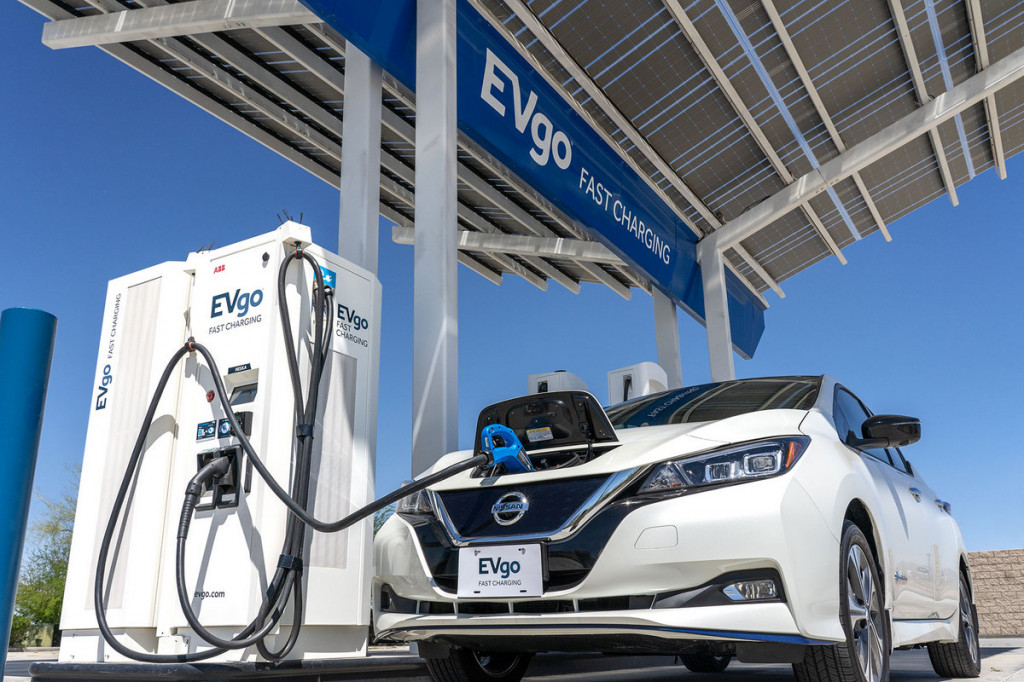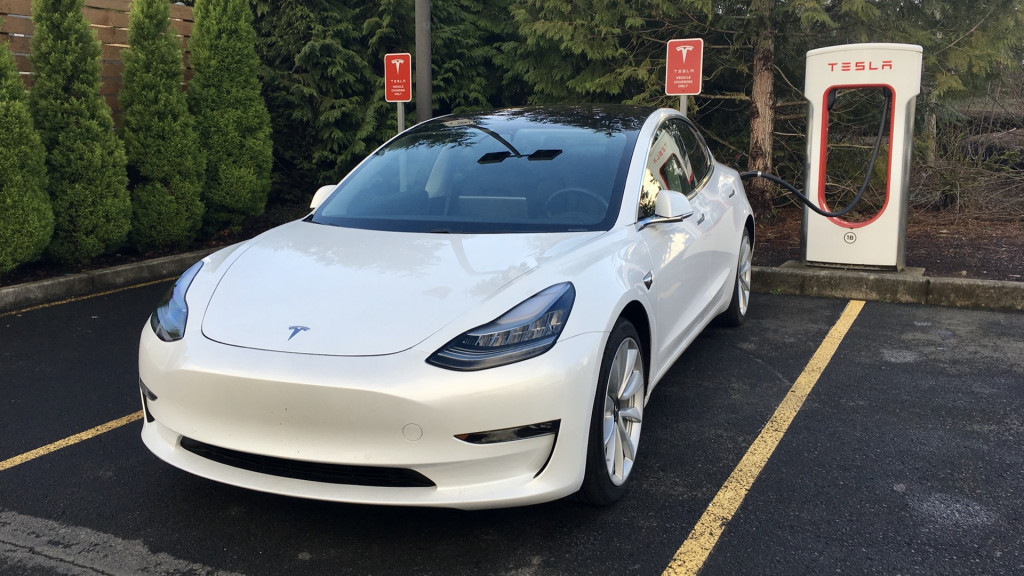Beta might have been better from the start, but that didn’t keep it from losing a videocassette recorder war versus VHS back in the 1980s.
Such was the case, it seems, in the battle between CHAdeMO and CCS as a standard for electric-vehicle fast-charging in the 2010s.
Nissan has been the biggest longtime booster of CHAdeMO—the Beta of the charging world—which originated in Japan and from the get-go was capable of more than CCS is to this day, such as with bi-directional charging. But with Nissan’s announced shift to CCS in the upcoming Ariya electric crossover for the U.S. and Europe, CCS wins, heading into the 2020s, as the single standard for EV fast charging outside of the Tesla ecosystem.
Some might say the writing has been on the wall ever since U.S. and German automakers allied in the formation of CCS in 2011. But most will agree the victory happened back in 2017, when Hyundai moved to standardize around the CCS format with its current electric vehicles, and even Honda chose to introduce its Clarity Electric with CCS.
![2015 Nissan Leaf with CHAdeMO fast-charging cable plugged in [photo John Briggs] 2015 Nissan Leaf with CHAdeMO fast-charging cable plugged in [photo John Briggs]](https://images.hgmsites.net/lrg/2015-nissan-leaf-with-chademo-fast-charging-cable-plugged-in-photo-john-briggs_100558582_l.jpg)
2015 Nissan Leaf with CHAdeMO fast-charging cable plugged in [photo John Briggs]
That doesn’t spell the end for CHAdeMO. Just as Sony started to produce VHS hardware in 1988 but didn’t quite abandon Beta, Nissan confirmed that there will still be new Leafs with CHAdeMO as well as a decade of about 150,000 Leafs compatible with the standard in the U.S.
Simply put, many years from now, you shouldn't have a problem finding charging stations capable of adding charge when you’re out on a weekend road trip with a car like the Nissan Leaf Plus.
What it does signal is the likely end of the road for a decade-long expansion of U.S. CHAdeMO DC fast-charging infrastructure that cost Nissan tens of millions of dollars.
Nissan last year said that it has installed more than 2,000 DC fast-charging connectors across the U.S. At that time it had spent more than $60 million on charging installations in the U.S., much of that DC fast charging.

Nissan Leaf charging at EVgo fast charger in Baker, California
Last August, with EVgo, Nissan committed to 200 more 100-kw-capable CHAdeMO-format fast chargers across the U.S. In a quick scan of EVgo, PlugShare, and Chargeway apps, it appears that only a few of those are online 11 months later. Nissan confirmed to Green Car Reports Thursday that the project is still moving forward.
All this continued effort into multiple standards isn’t going to be seen as value-added years from now.
And if you look at the numbers today, CCS is still not the dominant standard by chargers or connectors.

U.S. DC fast chargers - July 15, 2020 - Alternative Fuels Data Center
According to the U.S. DOE Alternative Fuels Data Center, as of July 15, 2020, CHAdeMO still holds the lead by 179 stations—meaning you likely have more locations to choose from along your route if you drive a Nissan Leaf Plus than if you have a Chevrolet Bolt EV.
But in terms of connectors at those stations, CCS already has a strong lead—with 5,150 total charging connectors, more than 1,000 ahead of CHAdeMO.

U.S. and Canada DC fast chargers - July 15, 2020 - Alternative Fuels Data Center
Reconfiguring the tally to include the U.S. and Canada together doesn’t change things much. Then, CHAdeMO again has the lead in number of stations, but CCS is within 135 stations of overtaking CHAdeMO. And between the U.S. and Canada, CHAdeMo is still beating CCS by nearly 1,200 connectors.
Thanks to Electrify America and others, many of those connectors are 150 kw, and some of them are 350 kw. On the other hand, most of the CHAdeMO connectors are 50 kw, with some 24-kw chargers included in the totals. Stations allowing 100-kw CHAdeMO charging—which the Leaf Plus can take advantage of—are sparse and scattered, across the U.S., although Petro-Canada has a cross-country network up north.
But don’t rush to call any vehicle that uses CCS the victor in this standards war.

Tesla Model 3 at Supercharger, Sandy OR
Tesla beats both of the standards in a tally of charging connectors. And while its number of charging-station locations is far less than that of the other standards, the ability of its vehicles to use one or both of the other standards, depending on the model and the adapter—and with Tesla connectors offered at some non-Tesla chargers—makes them above and beyond the most flexible when it comes to fast-charging.
It's a reminder the standards war isn't actually over in the U.S. That leaves us with a new, more 21st-century comparison. Tesla Supercharging uses CCS2 in Europe, but in the U.S. it's a closed ecosystem—the Apple iOS, perhaps, versus CCS as the Android.
If Tesla could jump on CCS in the U.S., too, we’d all be winners.
